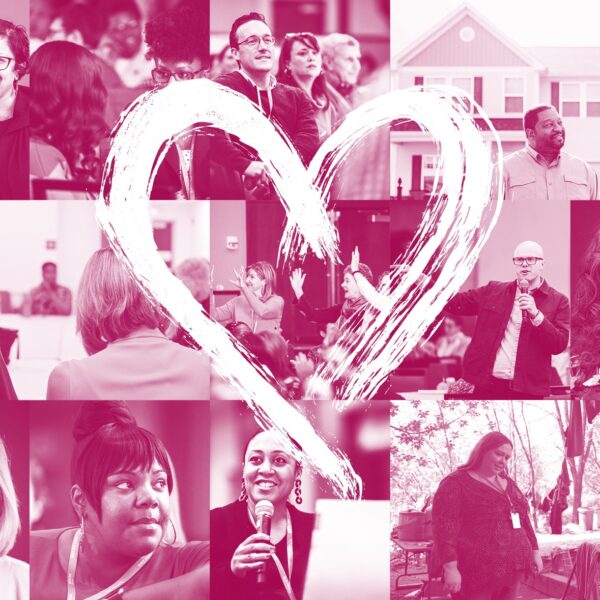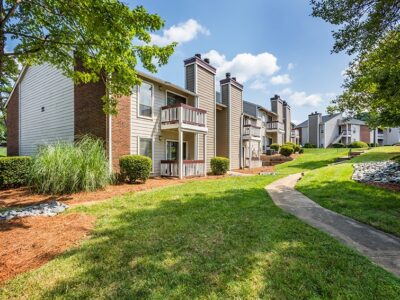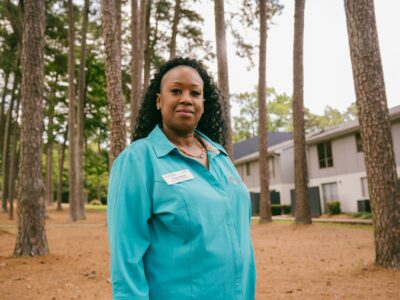For the past few weeks, we have been lifting up the challenges that communities have been facing during the response to COVID-19. This week, we wanted to honor the hope being offered by communities that have come together in unprecedented ways to protect people experiencing homelessness.
During a virtual convening of leaders in Built for Zero, we asked people to share one thing that they are proud of accomplishing since the pandemic began.
The Power of Partnerships
One community moved nearly 200 older and vulnerable people from shelter into hotel rooms. Shelter providers have supported each other by sharing sanitation supplies. Outreach workers have been continuing to hit the streets committed to protecting the most vulnerable people in their community, despite risks to their own health.
Communities have ensured that people experiencing homelessness can safely access breakfast, lunch, and dinner, using innovative solutions like offering drive-through food pantry pick-up and mobile food trucks.
This has only been possible through the efforts of partners coming together across sectors and disciplines to ensure their most vulnerable neighbors — and the community at large — is safe.
“Right now the Department of Health, Department of Mental Health, Disaster Management, Human Services are all looking for ways to make sure the people who are most vulnerable in our communities will stay healthy,” said Mary Simons, Executive Director of Open Doors Homeless Coalition in Gulf Coast, Mississippi.
“We have a whole group of people looking at funding sources we’ve never really had access to for this group. They are working to mitigate the vulnerabilities and ensure that the public is safe.”
Some communities noted that the urgency of the moment has cleared the path of historical challenges to coordination. Federal partners noted the way that the crisis has spurred communities to come together, improve systems and work together in unprecedented ways.
“While we’re in the middle of this, it’s hard to look at the future,” said Katy Miller, from the U.S. Interagency Council on Homelessness. “But it’s really important to take a moment to take a step back to see that systems are working better and faster. Everyone is talking and working with urgency. Once we come out of this crisis, it’s really important that the cross-sector responses continue.”
Housing is health
One person described their proudest accomplishment simply.
“We’ve continued housing folks.”
It has become clear that housing is the best protection against COVID-19. So while cities and counties are working together in new ways, doing whatever it takes to get people into spaces for isolation or quarantine, many are understanding that housing is also a critical and permanent solution. One community said that they have doubled down on getting people into permanent housing, emptying the shelter using every penny they could raise.
Simons described the unprecedented attention and action to get people experiencing homelessness to safety.
“Everyone is about getting people inside,” she said. “We know that ‘inside’ is permanent housing. Our ‘why’ is that it’s the right thing to do. Get them into permanent housing, keep them in permanent housing, and be prepared to prevent homelessness.”
Even as communities are encountering challenges to the housing process — lack of personal protective equipment to protect outreach staff and disruptions to inspections and housing processes — permanent housing remains the ultimate goal.
Many communities have moved to electronic signatures for documentation and working with housing authorities to execute virtual housing inspections.
“We’ve seen a heroic and continued commitment from you to keep doing outreach and housing practices,” said Nate French, Portfolio Lead for the Built for Zero Collaborative. “Together we understand that ending homelessness is a public health response.”
“We can do impossible things.”
It is a moral and public health imperative to get people experiencing homelessness to safety, not only during the current crisis, but for all that will come. And in this moment of crisis, many communities are coming together to rise to the challenge.
“Ending homelessness is about healing deep community wounds,” said Ramina Davidson, a Built for Zero coach. “We have enormous power to heal these wounds. It sounds expansive and impossible — and it is, if we try to do this work alone. But through collaboration, we can do impossible things.”
We’ve been inspired by the problem-solving and determination of communities in the face of this crisis.
“We’re not alone,” Davidson said. “There are allies everywhere. We’ve allied with public interest attorneys who are fighting to prevent evictions, teachers, hospitality workers. As we suffer this communal trauma together, we have enormous power.”




